Abstract
The growth and metabolism of the live vaccine strain of Pasteurella tularensis in different media were investigated. Maximal growth was observed in a medium containing a sulfuric acid digest of casein as amino acid source. Amino acid metabolism produced considerable ammonia, and the rate of ammonia evolution was directly proportional to the growth rate. The most likely route for amino acid breakdown is nonspecific oxidative deamination.
Full text
PDF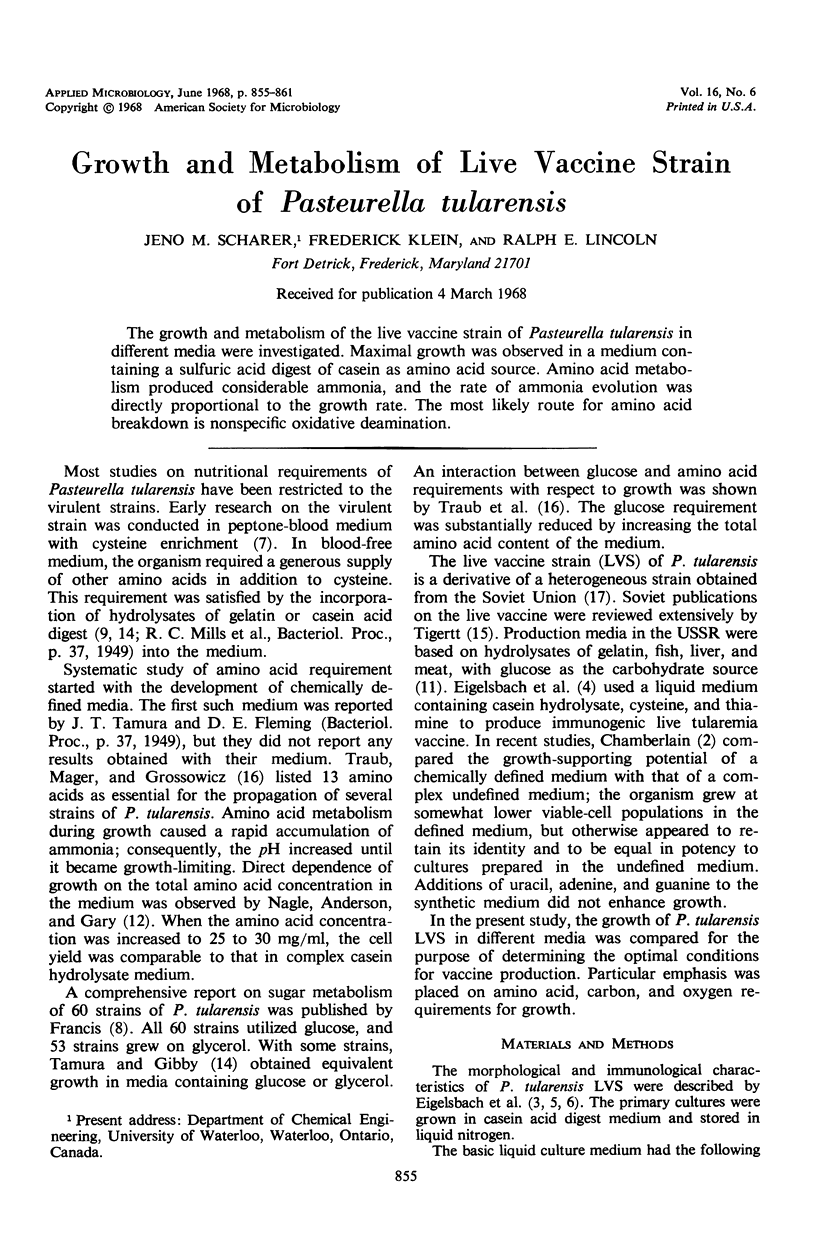
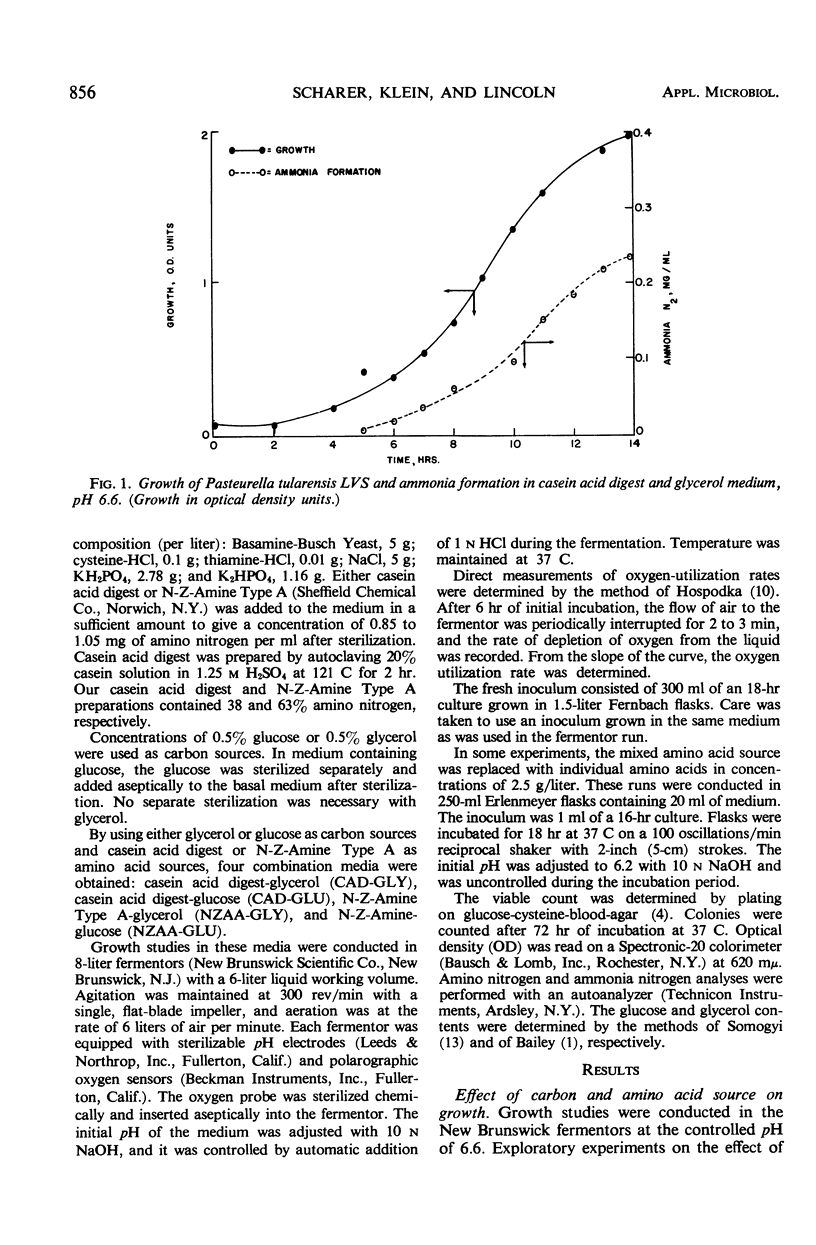
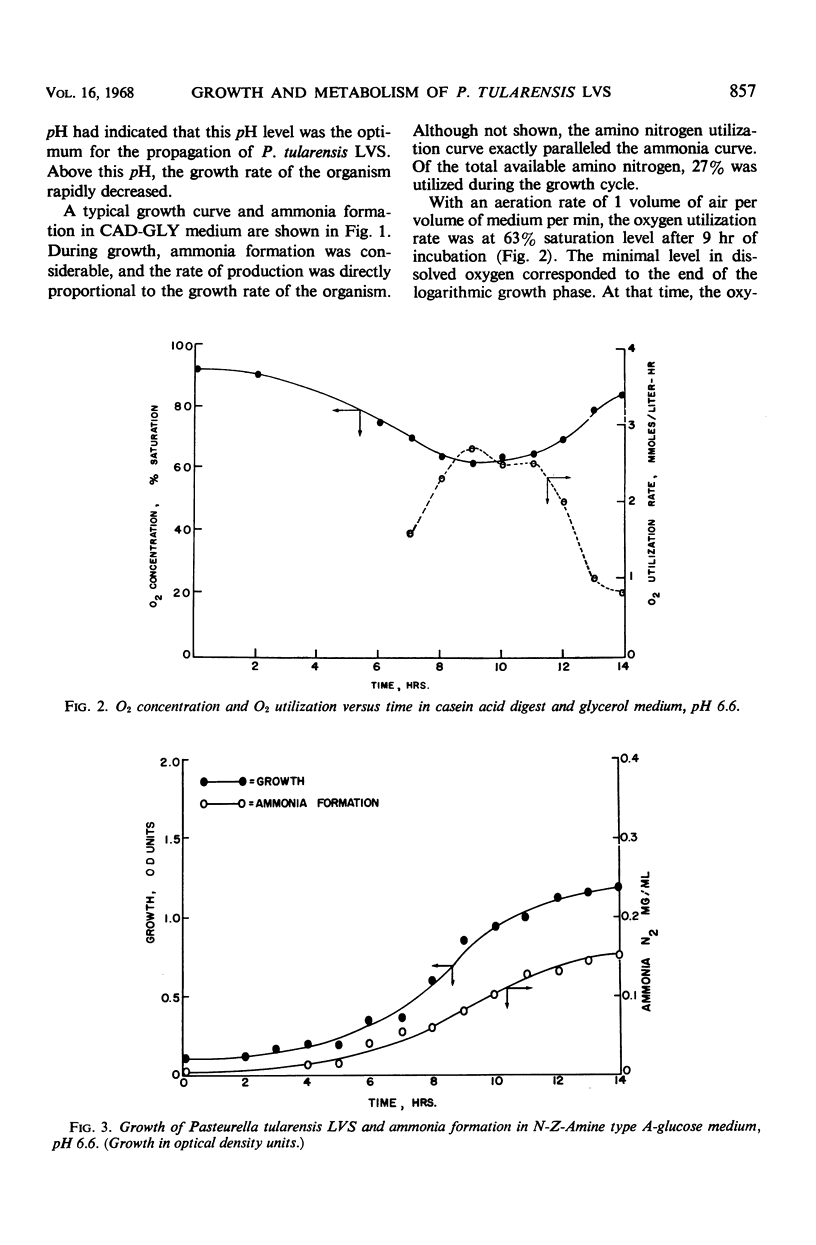
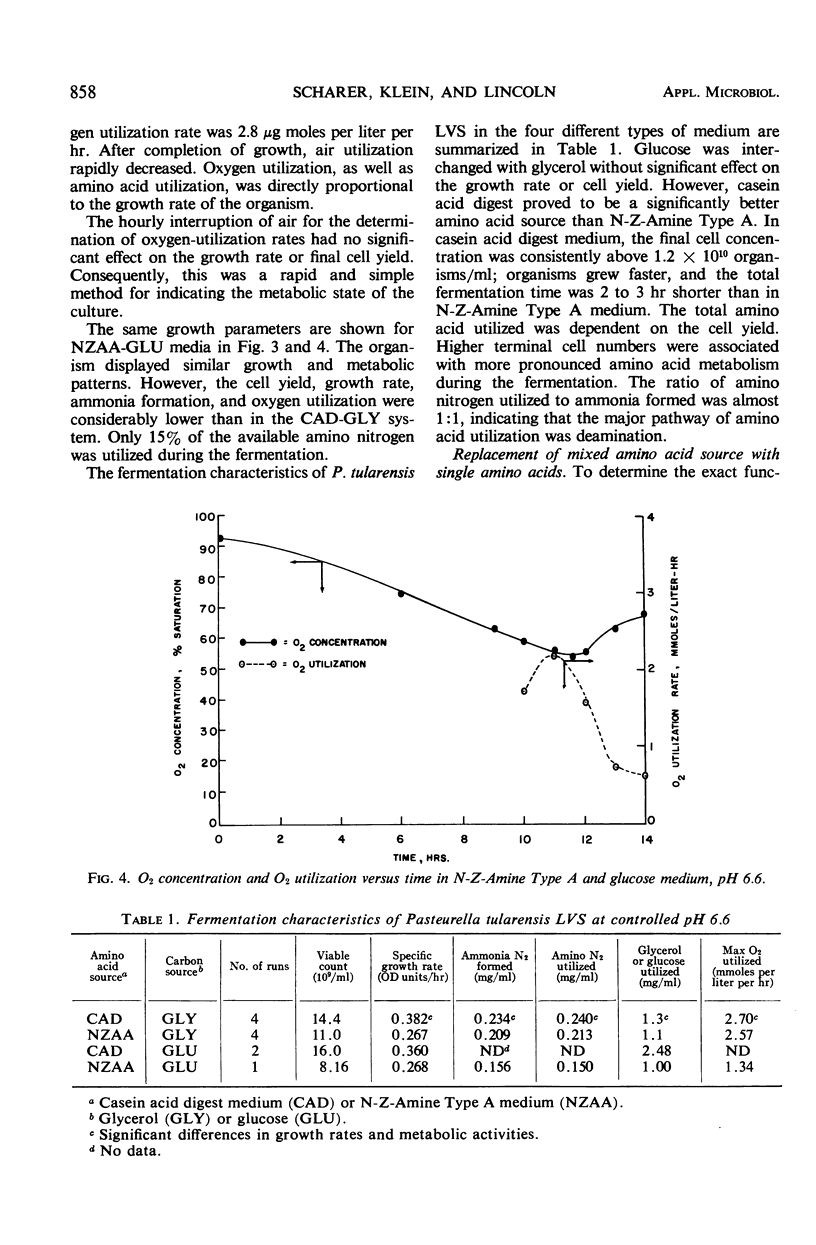
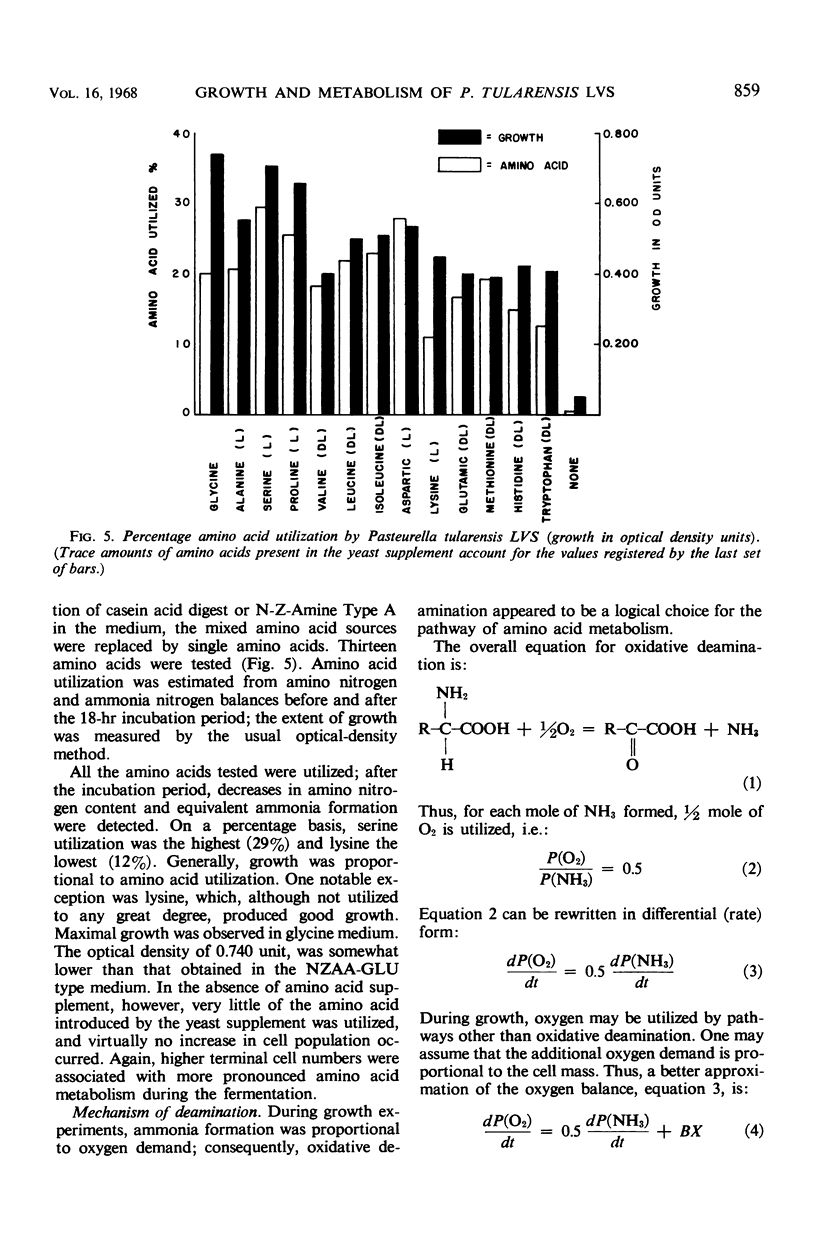
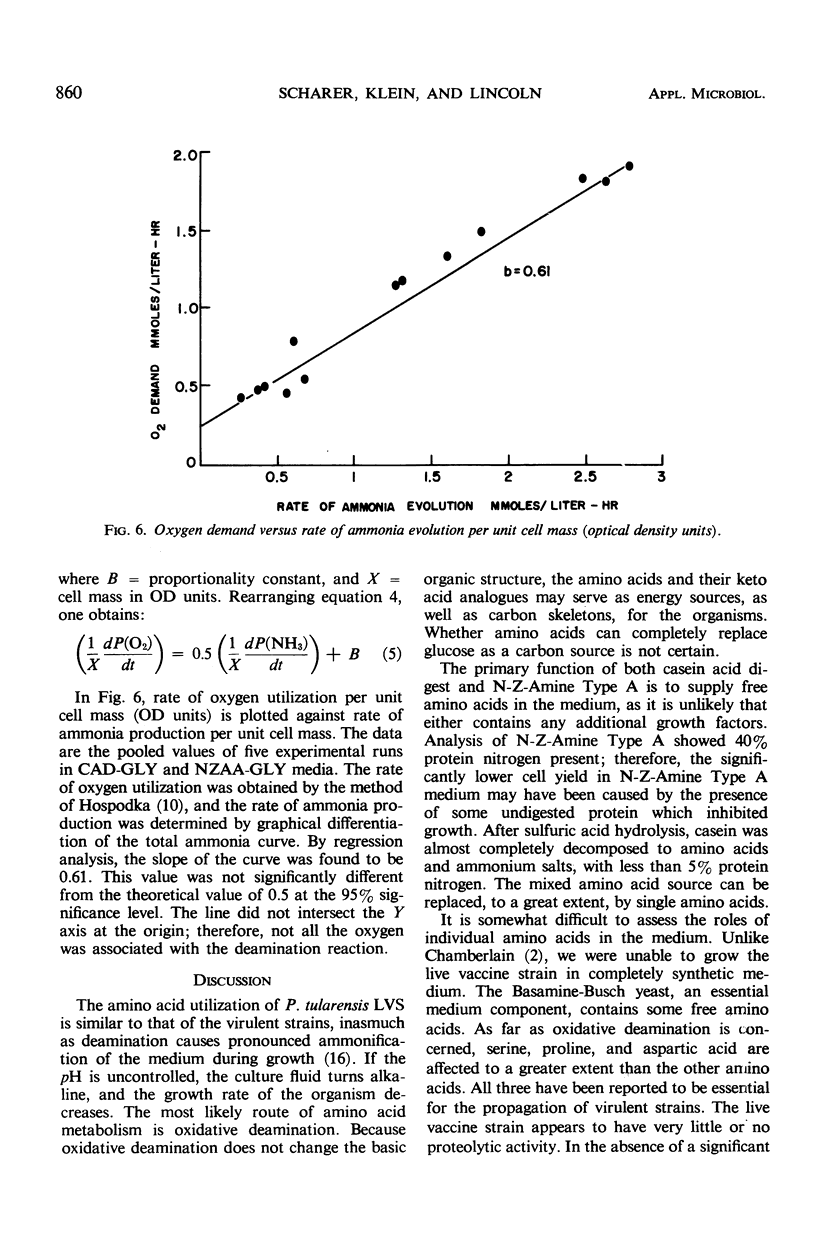
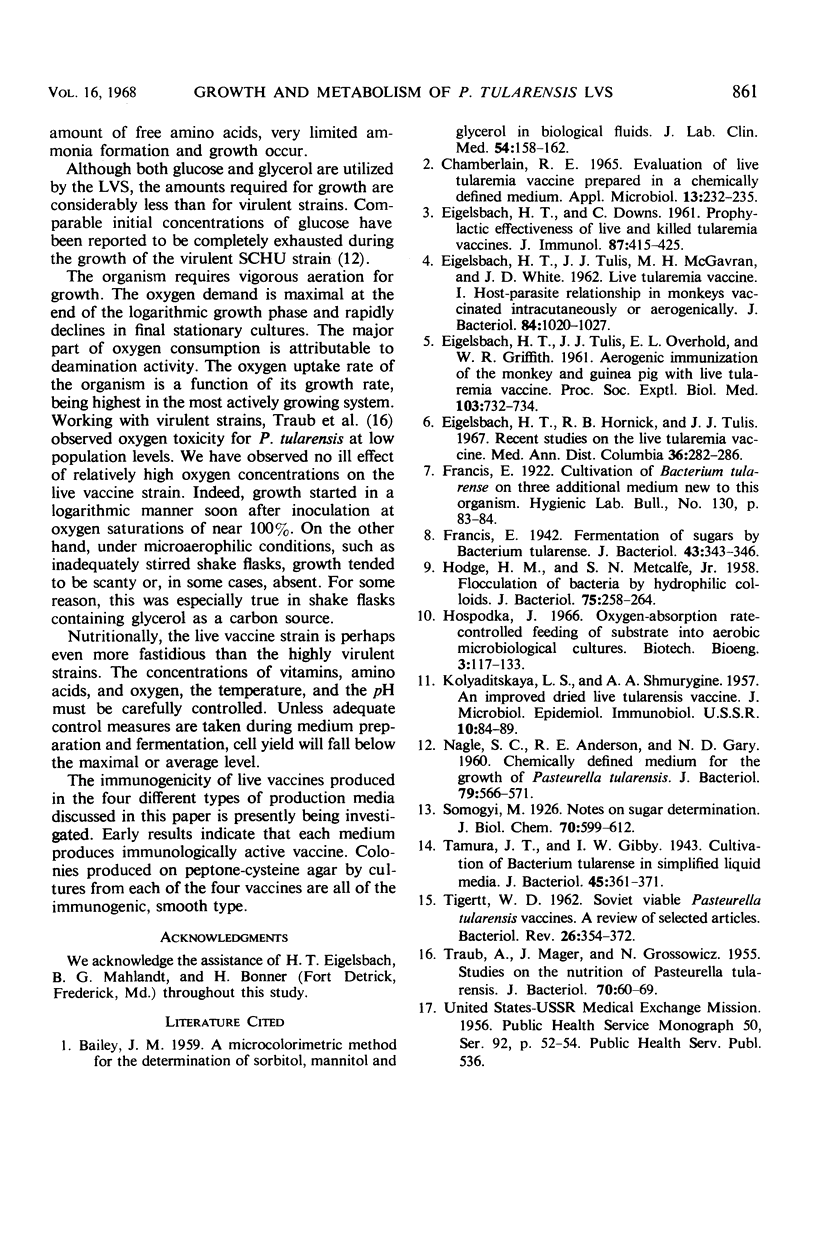
Selected References
These references are in PubMed. This may not be the complete list of references from this article.
- BAILEY J. M. A microcolorimetric method for the determination of sorbitol, mannitol, and glycerol in biologic fluids. J Lab Clin Med. 1959 Jul;54(1):158–162. [PubMed] [Google Scholar]
- CHAMBERLAIN R. E. EVALUATION OF LIVE TULAREMIA VACCINE PREPARED IN A CHEMICALLY DEFINED MEDIUM. Appl Microbiol. 1965 Mar;13:232–235. doi: 10.1128/am.13.2.232-235.1965. [DOI] [PMC free article] [PubMed] [Google Scholar]
- EIGELSBACH H. T., DOWNS C. M. Prophylactic effectiveness of live and killed tularemia vaccines. I. Production of vaccine and evaluation in the white mouse and guinea pig. J Immunol. 1961 Oct;87:415–425. [PubMed] [Google Scholar]
- EIGELSBACH H. T., TULIS J. J., OVERHOLT E. L., GRIFFITH W. R. Aerogenic immunization of the monkey and guinea pig with live tularemia vaccine. Proc Soc Exp Biol Med. 1961 Dec;108:732–734. doi: 10.3181/00379727-108-27049. [DOI] [PubMed] [Google Scholar]
- Eigelsbach H. T., Hornick R. B., Tulis J. J. Recent studies on live tularemia vaccine. Med Ann Dist Columbia. 1967 May;36(5):282–286. [PubMed] [Google Scholar]
- Eigelsbach H. T., Tulis J. J., McGavran M. H., White J. D. LIVE TULAREMIA VACCINE I. : Host-Parasite Relationship in Monkeys Vaccinated Intracutaneously or Aerogenically. J Bacteriol. 1962 Nov;84(5):1020–1027. doi: 10.1128/jb.84.5.1020-1027.1962. [DOI] [PMC free article] [PubMed] [Google Scholar]
- Francis E. Fermentation of Sugars by Bacterium Tularense. J Bacteriol. 1942 Mar;43(3):343–346. doi: 10.1128/jb.43.3.343-346.1942. [DOI] [PMC free article] [PubMed] [Google Scholar]
- HODGE H. M., METCALFE S. N., Jr Flocculation of bacteria by hydrophilic colloids. J Bacteriol. 1958 Mar;75(3):258–264. doi: 10.1128/jb.75.3.258-264.1958. [DOI] [PMC free article] [PubMed] [Google Scholar]
- NAGLE S. C., Jr, ANDERSON R. E., GARY N. D. Chemically defined medium for the growth of Pasteurella tularensis. J Bacteriol. 1960 Apr;79:566–571. doi: 10.1128/jb.79.4.566-571.1960. [DOI] [PMC free article] [PubMed] [Google Scholar]
- TIGERTT W. D. Soviet viable Pasteurella tularensis vaccines. A review of selected articles. Bacteriol Rev. 1962 Sep;26:354–373. doi: 10.1128/br.26.3.354-373.1962. [DOI] [PMC free article] [PubMed] [Google Scholar]
- TRAUB A., MAGER J., GROSSOWICZ N. Studies on the nutrition of Pasteurella tularensis. J Bacteriol. 1955 Jul;70(1):60–69. doi: 10.1128/jb.70.1.60-69.1955. [DOI] [PMC free article] [PubMed] [Google Scholar]
- Tamura J. T., Gibby I. W. Cultivation of Bacterium tularense in Simplified Liquid Media. J Bacteriol. 1943 Apr;45(4):361–371. doi: 10.1128/jb.45.4.361-371.1943. [DOI] [PMC free article] [PubMed] [Google Scholar]


